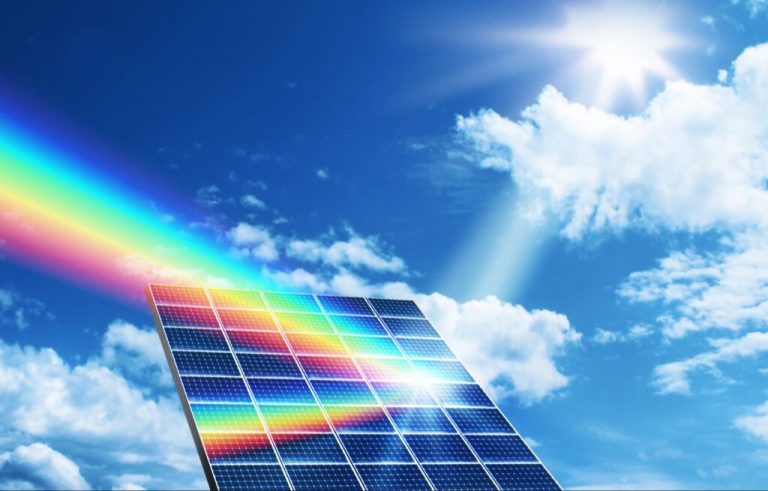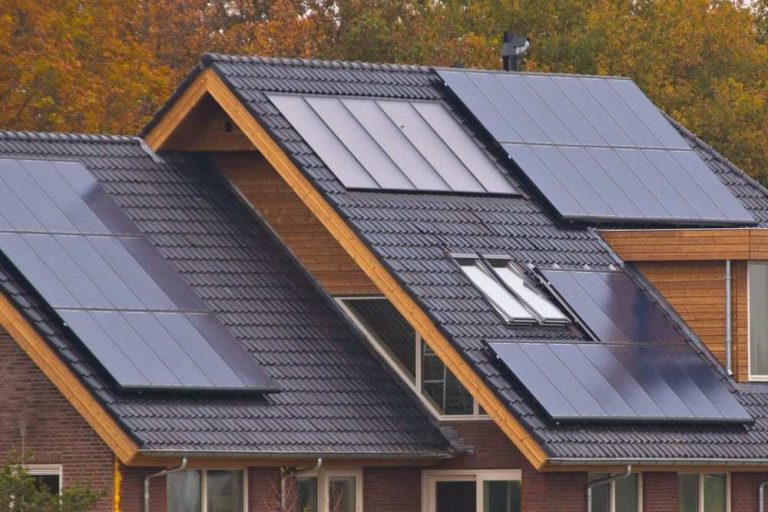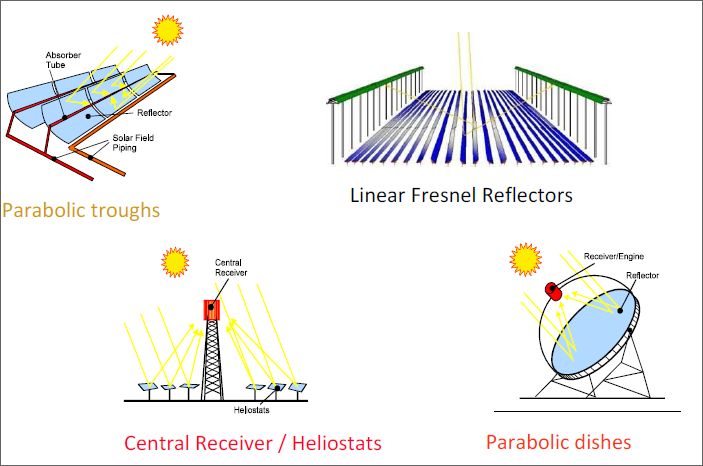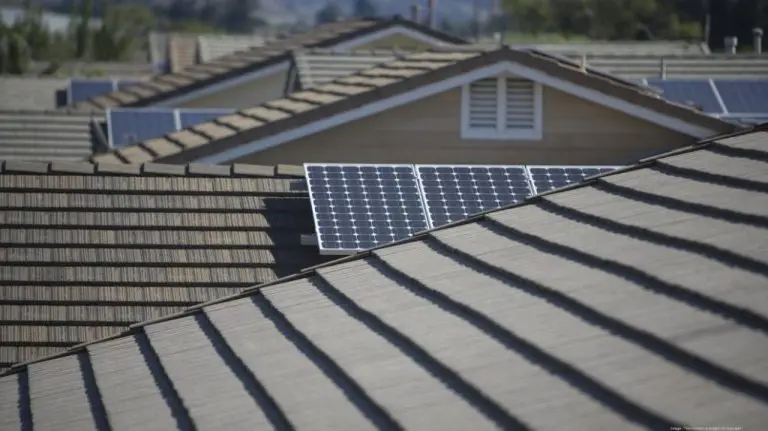How Does Solar Radiation Affect The Environment?
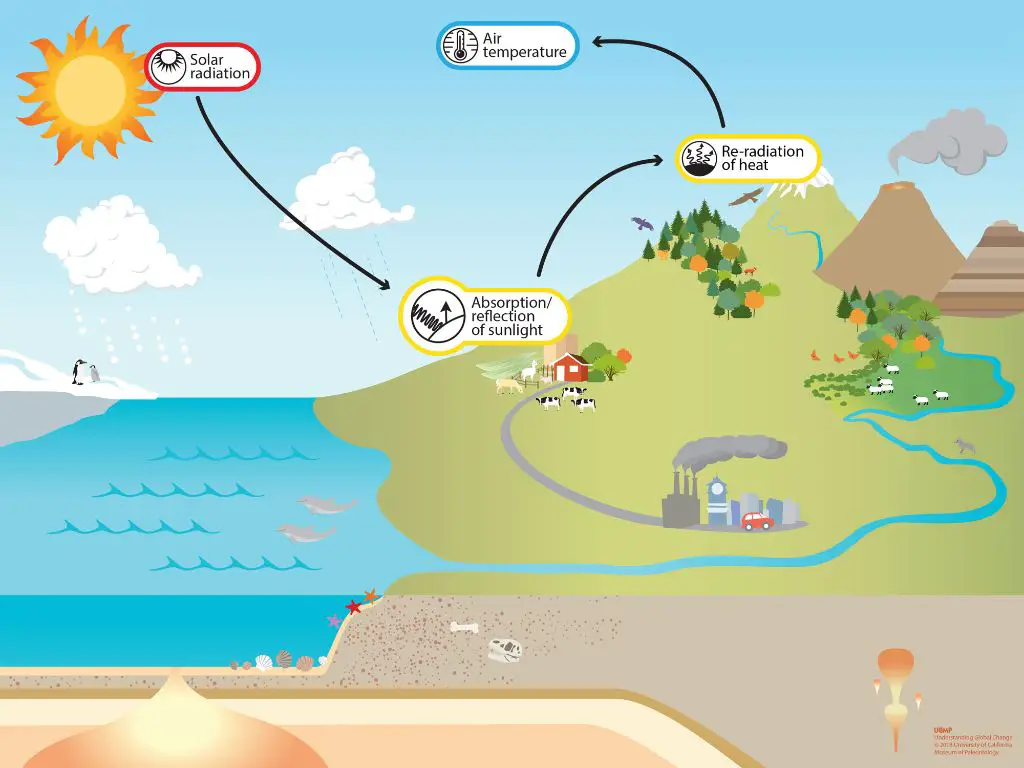
Solar radiation refers to the sun’s energy that reaches the Earth’s surface in the form of electromagnetic waves including ultraviolet (UV), visible, and infrared radiation (“Solar Radiation Definition, Types & Effects”). It is a primary driver of Earth’s climate and weather and has widespread effects on the atmosphere, hydrosphere, cryosphere, and biosphere. Solar radiation powers the water cycle, drives atmospheric circulation, and facilitates photosynthesis. However, excessive exposure can lead to a number of negative impacts such as sunburn, skin cancer, melting glaciers, wildfires, and desertification. This article will provide an overview of how solar radiation affects Earth’s environmental systems.
Solar Radiation and Climate
Solar radiation is the primary driver of Earth’s climate and causes significant temperature changes. The amount of radiation emitted by the Sun directly impacts air and ocean temperatures on Earth. When solar activity increases, more radiation reaches Earth and causes warming. Conversely, decreases in solar radiation lead to cooling (1). According to NASA, changes in solar irradiance have contributed to temperature changes of around 0.1 degrees Celsius over the last century (2). While the Sun’s output does fluctuate slightly, it has been relatively stable in recent decades and cannot explain the rapid warming observed on Earth (3). Overall, variations in solar radiation are a minor factor influencing Earth’s climate compared to the greenhouse effect and human-caused emissions.
Effects on the Atmosphere
Solar radiation affects the atmosphere in several key ways. As sunlight passes through the atmosphere, certain gases like ozone (O3) and carbon dioxide (CO2) absorb the incoming photons (Atmospheric Effects). This absorption warms the atmosphere and is a major driver of climate and weather patterns. One of the most important effects is on the ozone layer in the stratosphere, which absorbs ultraviolet radiation from the sun.
Ozone plays a crucial role in absorbing harmful ultraviolet (UV) radiation, especially UV-B and UV-C rays, thereby protecting life on Earth (Chapter 2 Section 1). Excessive UV exposure from the sun can damage DNA, cause skin cancer, impair immune function, and have other deleterious health effects. The ozone layer acts as a shield and prevents most high energy UV radiation from reaching the surface. Changes in stratospheric ozone impact how much UV reaches Earth’s biosphere.
In addition, gases like carbon dioxide influence the greenhouse effect and surface warming. Human activities that release CO2 and other greenhouse gases into the atmosphere have depleted ozone and altered the radiative balance, amplifying the impacts of solar radiation (Solar radiation: what it is and how it is produced). Overall, the gaseous composition of the atmosphere strongly determines how incoming solar energy affects climate, weather, and life on Earth.
Impacts on the Oceans
The oceans absorb over 90% of the excess heat trapped by greenhouse gases, resulting in sea surface warming (NOAA, 2022). Since 1969, the top 2,300 feet of the oceans have warmed by an average of 0.302°F per decade (Ocean Visions, 2022). This warming causes seawater to expand, contributing to sea level rise. Warmer oceans also lead to increased evaporation. When water evaporates from the ocean, the salt doesn’t evaporate with it. This results in an increase in ocean salinity over time, which can negatively impact marine ecosystems.
Influence on the Biosphere
Solar radiation powers the process of photosynthesis, which allows plants to convert sunlight into chemical energy and grow. Photosynthesis is vital for nearly all life on Earth, as plants form the base of the food chain. Changes in solar radiation can have significant impacts on photosynthetic rates and plant growth.
According to a study by Britannica, most solar energy wavelengths are actually unsuitable for photosynthesis. Only about 1-2% of the sunlight striking plants is used in photosynthesis. Plants have adapted to capture and utilize the solar radiation that provides the specific energy required for photosynthesis (1).
Increases or decreases in solar radiation affect the productivity and growth of plants and phytoplankton. More radiation can allow for higher photosynthetic rates and plant growth, expanding habitats and food sources. Less radiation reduces photosynthesis, slowing plant development and shrinking ecosystems. Even small changes in solar radiation can disrupt delicately balanced food webs and impact biodiversity.
Melting Ice and Snow
Rising global temperatures due to increased solar radiation absorption are causing ice caps, glaciers, and snowpack to melt at accelerated rates. According to the UCAR Center for Science Education, when solar radiation hits snow and ice, approximately 90% of it is reflected back out to space. However, as ice melts it exposes darker land and water surfaces, which absorb about 90% of the solar radiation and amplify warming effects even more (UCAR Center for Science Education).
In the Arctic, melting sea ice allows the darker ocean to absorb more heat, and melting land ice contributes to sea level rise. Research from the University of Washington found that increased absorption of solar radiation due to shrinking Antarctic sea ice explains its rapid yearly retreat. Solar heating of the Southern Ocean appears to be a key factor driving this alarming trend (University of Washington).
Glaciers are also rapidly retreating worldwide. When glaciers melt faster than snowfall can accumulate into ice, they shrink in size. Not only does this contribute to rising seas, but it also depletes freshwater reservoirs that billions rely on. Continued solar heating threatens the very existence of glaciers across the globe.
Desertification
Solar radiation drives the hydrologic cycle, influencing precipitation and evaporation rates across the planet. Increased solar radiation can lead to accelerated drying of land and soil in vulnerable regions, contributing to desertification and expanding deserts. According to a 2016 study published in the International Journal of Environmental Studies, desertification causes a significant increase in the albedo or reflectivity of the land surface, as bare ground reflects more sunlight than vegetation (https://www.mdpi.com/2225-1154/4/4/64). This increase in reflected radiation can further reduce rainfall over desertified areas, creating a positive feedback loop. Some climate models suggest that large-scale solar farms constructed in deserts may also contribute to regional warming and drought intensification by altering surface albedo and heat fluxes (https://www.greenbiz.com/article/giant-desert-solar-farms-might-have-unintended-climate-consequences). Careful siting and design of solar installations may help mitigate these effects.
Wildfires
Increasing levels of solar radiation are contributing to more frequent and intense wildfires around the world. As global temperatures rise, heatwaves become more common and landscapes become drier. This creates ideal conditions for wildfires to ignite and spread rapidly.
Areas that were previously too wet to burn are now at risk of fires due to increased drying. Forests, grasslands, scrublands and other ecosystems are more likely to have fires that burn hotter, faster and over larger areas. The intense heat can kill trees and vegetation that would normally survive low intensity fires.
Wildfires release large amounts of carbon dioxide and other greenhouse gases, further accelerating climate change. They also destroy habitats and release particulate matter that pollutes the air. More intense wildfires represent a direct threat to biodiversity, ecosystems, property and human life.
Adaptation measures like prescribed burning, fire breaks and public awareness campaigns can help reduce risks. But as long as solar radiation continues increasing, extreme wildfires will likely be a growing challenge worldwide.
Adaptive Measures
Organisms have adapted in various ways to reduce the negative effects of solar radiation. Some key adaptive measures include:
Shading – Many plants and animals seek shade to avoid direct exposure to the sun’s rays. Trees and other plants provide shade and shelter for animals. Humans use shade structures, hats, and umbrellas to protect themselves from excessive radiation.
Insulation – Insulation in the form of fur, feathers, blubber, and thick skin helps protect animals from solar radiation. Clothing serves a similar purpose for humans. Insulation prevents absorbed heat from leaving the body too quickly.
Reflectivity – Light colored skin, feathers, hair, scales, etc. reflects more solar radiation, preventing absorption and overheating. Pale human skin likely evolved in part as an adaptation to moderate UV exposure. Some animals have reflecting feathers or ultra-white fur that minimizes radiation absorption.
Conclusion
In summary, solar radiation is critically linked to Earth’s climate, ecosystems, and the way living organisms have evolved and adapted. The sun’s radiation directly or indirectly establishes, as it creates the driving source of energy for atmospheric and oceanic circulation on our planet. Key effects of solar radiation on the environment can include melting ice and snow, causing significant impacts on temperatures and sea levels. Radiation also influences processes like photosynthesis, the water cycle, weather patterns, and animal migrations or behaviors. Meanwhile, excessive radiation can lead to issues like desertification, wildfires, damage to human health, and climate changes. Overall, maintaining a healthy balance of incoming solar radiation is essential for sustaining life and ecosystems on Earth. Understanding the diverse effects of solar radiation provides greater ability to model, predict and adapt to environmental changes over time.

